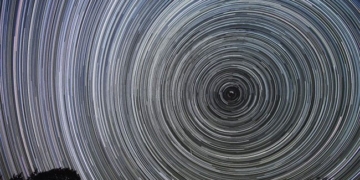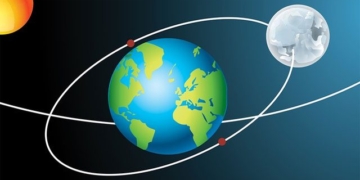The Loch Ness Centre in Scotland is planning the largest search project for the Loch Ness Monster since 1972.
According to reports from British media, the center has been reaching out to “monster hunters” and volunteers to participate in the search campaign, which is scheduled to take place on August 26.
In addition to a large number of personnel, the search for the mysterious creature of Loch Ness will utilize a wide range of cutting-edge survey equipment that has never been used in previous search campaigns, contributing to uncovering the secrets of the enigmatic waters.
This equipment includes drones equipped with infrared cameras capable of capturing thermal images underwater from above, thereby detecting any unusual activity in the loch. Meanwhile, underwater seismic sensors will also be used to detect sound signals, listening for any noises that might be produced by the “Loch Ness Monster.”

The famous photo capturing the shape of the creature believed to be the Loch Ness Monster. (Photo: Internet).
“The search in 1972 focused heavily on monitoring everything happening on the surface of the water, and that is what we are calling on volunteers to do – to attract as many observers on the water as possible,” said Paul Nixon, the managing director of the Loch Ness Centre.
In total, six observation points will be set up around the surface of the loch. Volunteers will be tasked with monitoring any disturbances on the water. A representative from the center also confirmed that, with the advent of smartphones, images captured of the Loch Ness Monster will be much clearer and more detailed than those from the past.
“We hope this search will inspire a new generation of Loch Ness enthusiasts. By participating in this large-scale surface survey, you will have a real opportunity to contribute to the fascinating mystery that has drawn many people from all over the world,” said Alan McKenna from Loch Ness Exploration.
Previously, in 1987, a team equipped with sonar buoys was sent to Loch Ness to scan for strange shapes in the water below, as part of a survey named the Deep Scan Campaign.
Now, the search will be revived with hopes of locating Nessie (the nickname for the Loch Ness Monster) or learning more about this mysterious creature.
Sightings of the Loch Ness Monster date back 1,500 years; however, there is no reliable evidence of the creature’s actual existence.
In 1934, a famous photograph of the Loch Ness Monster was taken, showing a creature resembling a dinosaur underwater. Some believe that Nessie could be a rare surviving member of the plesiosaur species, which went extinct 65 million years ago.
In 2019, scientists from New Zealand suggested that the Loch Ness Monster could be a giant eel, as a significant amount of eel DNA was found in the loch. However, researchers indicated that further investigation is needed to prove this hypothesis.


















































